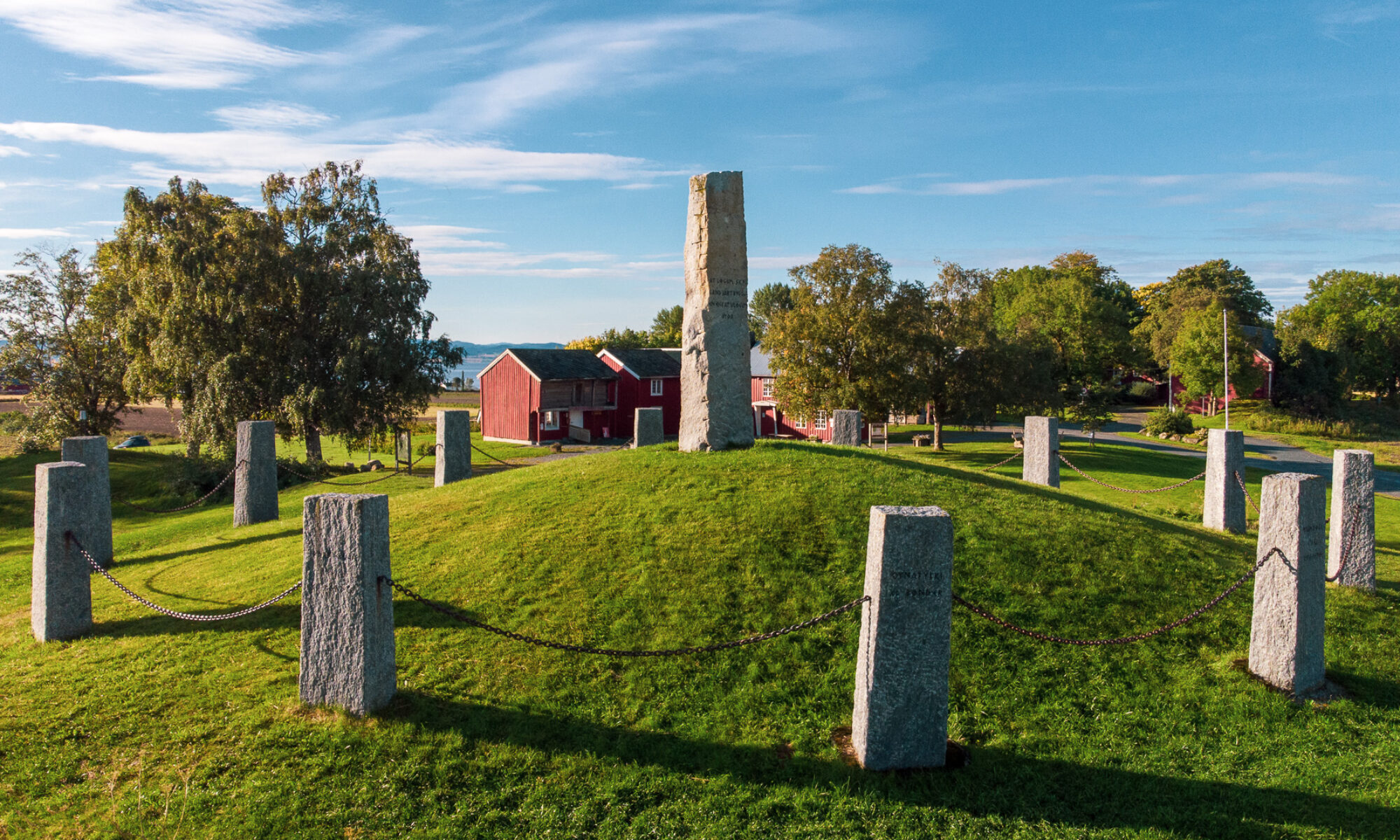Cistercian monks founded the monastery at Tautra. The Cistercian order emanated from the Chateaux monastery by Dijon, France. In Norway they settled primarily at Lyse monastery by Bergen. In 1205 some of the monks left Bergen to establish a new monastery in Trøndelag county.
Tautra was selected to be location for this new monastery. The reason might have been that this island was in excellent condition for gardening and farming, and the location for the island provided security and tranquillity, The fact that Munkholmen monastery outside Trondheim and Munkeby monastery by Levanger were located close by, was certainly also a decisive element in the location of the new monastery. Tautra monastery was dedicated, like all cistercian monasteries, to the honour of Mary in 1207.
In a short period of time the monastery had great influence and power in the district. Already in the 1220´s the abbot of Tautra was considered to be candidate to the seat of archbishop. The monastery had control of much land in Trøndelag and Nordmøre, – 167 farm estates, from those 22 were located at Frosta.

Throughout the 15th century certain processes of disintegration prevailed, and there is practically no information about Tautra monastery available from that time. However, much information is available from the last period of the monastery.
Mathias Henrikson, born in Denmark was abbot at the time. He misused his position and mortgaged much of the property of the monastery estates as well as personal property. Soon most of the monastery´s properties and valuables were squandered. Mathias from Tautra later became abbot of Hovedøya Monastery in the Oslofjord, where he continued his life of debauchery. Some time later he returned to Tautra. His way of life had not improved, and the archbishop Olav Engelbrektson managed at last to bring the abbot to a clerical court.
Catholic churches normally have several alters, and the convent chapel probably also had at least two. The convent chapel must have been solid and beautiful. A true adornment for the surroundings.
The monastery was fully equipped with boats and fishing tackle, blacksmith tools, glazier instruments etc. There was an abundance of silver spoons, copper kettles, brass and tin vessels, tablecloths etc. In many ways the monasteries represented cultural centres. The monks were educated in reading and writing. At Tautra they had a library of 75 volumes, just prior to the reformation.

There was much activity inside and outside the monastery. The Cistercian monks were first class craftsmen and keen gardeners. It is reasonable to think that this had an effect on the surroundings. At Frosta berry- and fruit gardens presumably often were a result of inspiration from the monastery garden. Herbs were cultivated for spies and for medical purpose. The monks also imported a special race of sheep in the district.
The monastery at Tautra was secularized in 1537, and today the Association of the Preservation of Norway Ancient Monuments owns the ruins.

#tautramonasteryruins #tautraklosterruiner
Enda et kapittel i #totenrundt -eventyret! #balkesenteret på #billerudgård med veggmalerier av selveste #pederbalke. Malt sommeren 1834 i karakteristisk, nesten abstrakt stil og med til dels veldig originale motiver. Talvik i Alta og Tautra klosterruiner på Frosta! Det er egentlig litt rart at ikke flere betydelige kunstnere har malt sistnevnte, ikke sant? Pluss i margen for staselig #vestalinneovn som forestiller en romersk prestinne (=vestalinne) i et lite, klassisk tempel OG en vidunderlig unik rundovn toppet med en byste av selveste #napoleonbonaparte #talvik #tautraklosterruiner #fortidsminneforeningendentrønderskeavdeling #fortidsminneforeningen #ruinromantikk #samiskkulturarv #samiskhistorie #fortidsminneforeningenfinnmark
Aug 30

Endelig er den fantastiske lesepulten på plass på Tautra! Du finner den rett innenfor døra i glassbygget på klostergardentautra, sammen med utstillingen til anine.hansen.
Lesepulten er laget etter inspirasjon av middelalderens lese-/skrivepulter og rommer den digitale modellen av klosteret. Her kan du "gå" rundt og få ny kunnskap!
Pulten er laget av historicalwoodcarving💚
Modellen finner du også på www.digitaletautra.no.
Konserveringen av ruinen går også videre, og vi har fått på plass informasjon om arbeidet på stillaset!
#digitaletautra #tautraklosterruiner #tautra #fortidsminneforeningendentrønderskeavdeling #fortidsminneforeningen #tidvis #klostergården #lesepult #readingdesk #medieval #cistercianabbey #cistercianruins #cistercian #treskjæring #håndverk #woodcarving #exploretrondelag #visitnorway #visitfrosta #frostingen #kulturrådet
Jun 9

#tautra #klosterruinene #tautraklosterruiner #ruiner #kloster #trøndelag #midtnorge #norge #norway #busstur #tur #sommer #summer #flowers #blomster #monasteryruins #monastery #klosterruinen #ruins #cistercienserkloster #cistercienserordenen #cistercienserklosteret #klosterkirke #klosterkirche #monasterychurch #munkekloster #visittautra #visitfrosta #visittrøndelag
Jun 2




You must be logged in to post a comment.